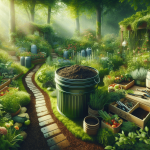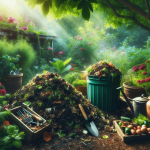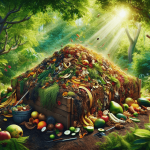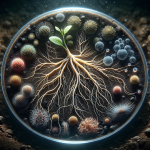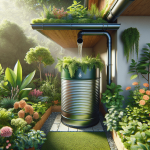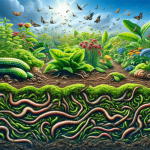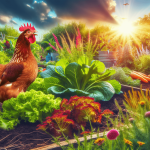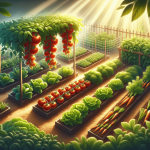This post may contain affiliate links. As an Amazon Associate, we may earn commissions from qualifying purchases.
Do you ever find yourself wondering how to invite more life into your garden? Specifically, those mysterious and often underappreciated creatures known as amphibians? Amphibians, which include frogs, toads, salamanders, and newts, are more than just fascinating creatures to watch; they’re integral to maintaining a balanced ecosystem. With their unique life cycles, they act as both predator and prey, helping to manage pests and supporting a thriving environment. If your goal is to create a garden sanctuary for these delightful creatures, you’ve come to the right place. Let’s discuss how you can transform your backyard into a welcoming haven that supports the intriguing and melodious world of amphibians.
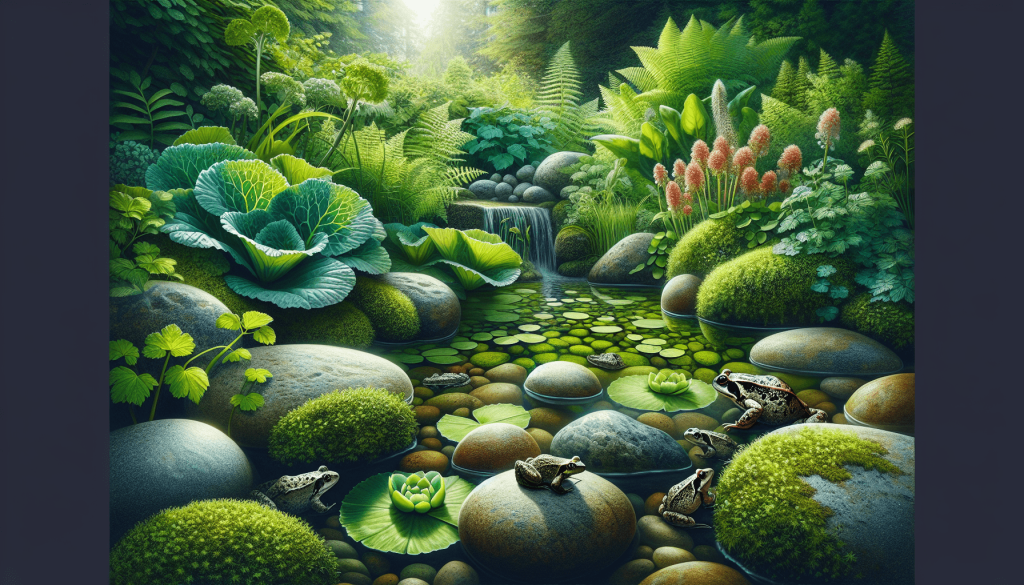
Understanding Amphibians and Their Needs
Before we can roll out the leafy green welcome mat, it’s essential to understand what amphibians need. Amphibians are cold-blooded vertebrates typically associated with both water and land. Hallmarked by their “double life,” they often begin their life as water-bound larvae, graduating to a life that’s spent partly on land. It’s these amphibious traits that dictate much of their habitat requirements.
Habitat Essentials
The most attractive garden for amphibians is one that mimics their natural environment. But what exactly does that mean?
- Water Sources: They need water for breeding and feeding. Whether it’s a small pond or a simple water feature, the presence of water is crucial.
- Shelter and Humidity: Amphibians like moist surroundings and often seek shelter under rocks, logs, and leaf litter. Providing such hideaways is essential for keeping them comfortable.
- Food Supply: Amphibians are voracious eaters of insects, meaning a pesticide-free garden teeming with bugs is a smorgasbord in their eyes.
Amphibian Characteristics
Understanding their physiological traits can help you design their new home easier.
- Skin Sensitivity: Their skin is permeable, aiding in water absorption and respiration. This makes them susceptible to toxins.
- Temperature Regulation: Being ectotherms, their activity is largely governed by external temperatures.
Why They Matter
Having amphibians in your garden isn’t just about admiring their beauty. They play a critical role in:
- Pest control, as they devour mosquitoes, slugs, and other pests.
- Serving as bioindicators, their presence reflects the health of your garden ecosystem.
Designing Your Amphibian-Friendly Garden
Creating an inviting environment isn’t as daunting as it seems. With a few strategic steps, your garden can attract these fascinating creatures.
Water Features: Ponds and More
Water is to amphibians what Wi-Fi is to teenagers—absolutely indispensable.
Building a Pond
Creating a pond is perhaps the greatest gift you can offer if you’re serious about amphibian hospitality. Here’s how you might start:
- Location & Size: Choose a shaded or semi-shaded spot. The pond doesn’t need to be large—anything from one meter across can suffice.
- Depth: Opt for varying depths from shallow edges to deeper sections (up to 60 cm) for diverse needs.
- Liner & Plants: Use a non-toxic liner to hold water and incorporate native plants along the edges and within the water for oxygenation and cover.
Maintenance
Ensure that the water remains pollutant-free and consider installing an easy access point for creatures to climb in and out. A gently sloping side or some strategically placed stones will do the trick.
Alternatives
If a pond isn’t feasible, consider birdbaths or small water features. Even a well-maintained rain garden can act as a surrogate amphibian oasis.
Shelter: Rocks and Logs
Amphibians love surprise parties. Well, they love surprises anyway. Providing ample hideaways will ensure they feel at home.
Creating Refuge
- Rocks and Logs: Arrange these around your garden. Incorporate larger logs and rocks for hiding and smaller debris like branches and twigs for added cover.
- Leaf Litter: Maintain a layer of decomposing leaves. It’s nutritious, natural, and shields them from predators and dry conditions.
Soils and Plants: Bug Buffets
The garden buffet should be pesticide-free to protect your delicate-skinned guests.
Choosing Plants
Aim for native plants that sustain a thriving insect population. Sunflowers, lavender, and various types of grasses can both look great and contribute to this thriving buffet.
Soil Management
Ensure that soil is naturally healthy and moisture-retentive. You might consider mulching to enhance moisture and habitat quality.
| Element | Ideal Condition |
|---|---|
| Water Source | Pond, Birdbath, or Feature |
| Shelter | Logs, Rocks, Leaf Litter |
| Food Sources | Insect-Friendly Plants |
| Soil | Moist, Non-toxic |
Avoiding Pitfalls: Chemicals and Predators
The dream can swiftly turn into a nightmare for amphibians in the presence of toxins and threats.
Chemical-Free Zones
Stay away from chemicals in your garden. This includes pesticides, herbicides, and fertilizers unless they’re certified organic and safe for amphibians.
Managing Predators
Pets like cats and dogs can sometimes unsettle amphibians. Ensure that there are secure areas that are less accessible for your inquisitive pets.
Frog Fencing
While it might seem extreme, implementing a small fence could enhance the safety of amphibians by reducing roadway or yard intrusions.
Initial Steps and Monitoring
So, you’re on board, planning your little corner of Eden. What next?
Beginning Your Project
- Plan: Sketch out your ideas and decide on the location for water sources and refuge areas.
- Source Materials: Gather your logs, rocks, and plants beforehand.
- Construction: Begin with the pond—set it up and fill it. Move on to arranging refuges and planting.
Keeping Check
Post-construction, continue to observe how your changes are faring. Monitor water levels, plant health, and pest populations. Keep an eye out for signs of your little visitors—tadpoles, egg masses, or adults. Consider setting up a wildlife camera to capture their nocturnal activities.
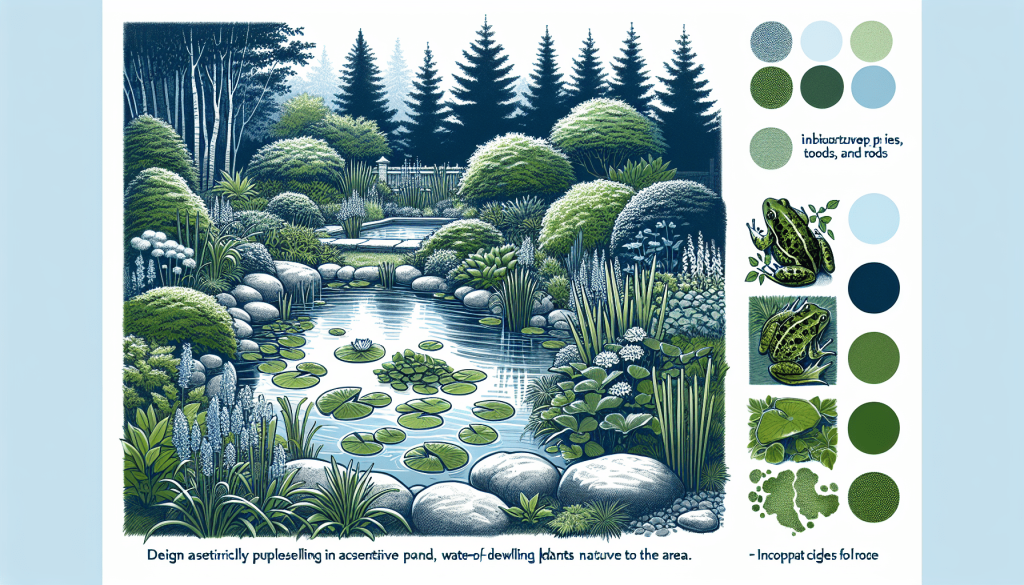
Personal Reflections and Experiences
Now that you’re off constructing your amphibian utopia, it’s always enlightening to tune into personal reflections and anecdotes concerning these garden endeavors. There’s something magical about creating a thriving space that supports life and seeing your efforts result in the appearances of frogs and newts.
The Joy of Discovery
Whether you’re an experienced gardener or a novice, crafting an amphibian-friendly garden introduces an enchanting dynamic. Imagine sitting by your pond and spotting eyes peeking out from the water’s surface or catching a glimpse of a small figure rustling through the leaves.
The Symphony of Night Sounds
Amphibians are the original orchestra of nature’s nighttime symphonies. Their croaks and chirrups transform silent gardens into vibrant communities.
Emotional Rewards
Creating a welcoming space for amphibians, amidst the growing concern for wildlife conservation, is more than about helping the environment; it’s a rewarding expression of stewardship and love for the creatures that inhabit our world alongside us.
Conclusion
Bringing amphibians into your garden unveils more than the charm and mystery these creatures offer. It’s about cultivating a balanced environment that thrives on diversity and sustainability. With a bit of effort and imagination, your garden can become a thriving habitat—a slice of serenity to home amphibians and, by extension, enrich your outdoor life.
Embrace the diversity they offer and enjoy the sights and sounds that promise to enliven every corner of your verdant sanctuary. Your plants will grow stronger, the pest control will be natural and cost-free, and a new dimension of natural beauty will emerge just outside your door. While achieving such a transformative, eco-friendly garden task feels like a stretch, remember—it all starts with a small pond, some pebbles, and careful planning. Best of luck journeying into this fulfilling endeavor!

